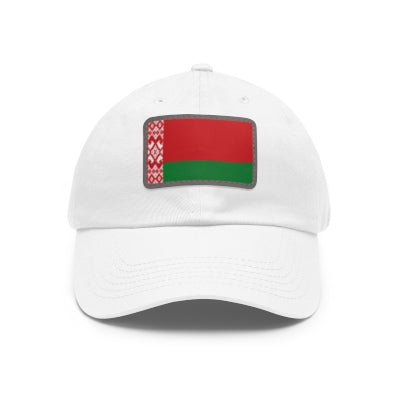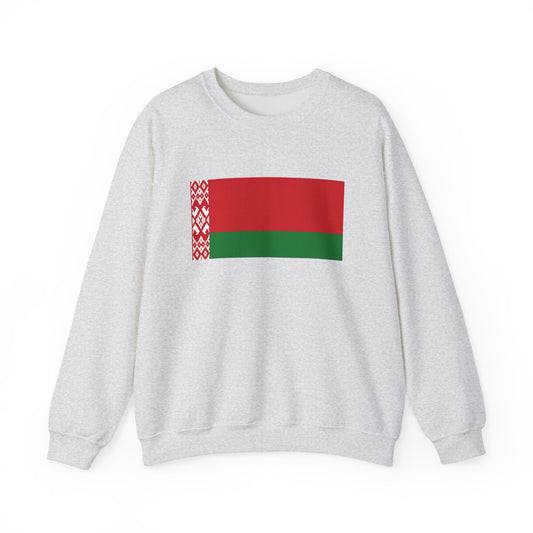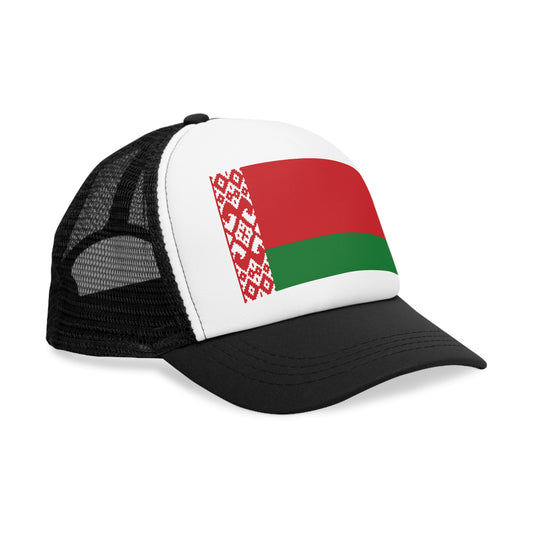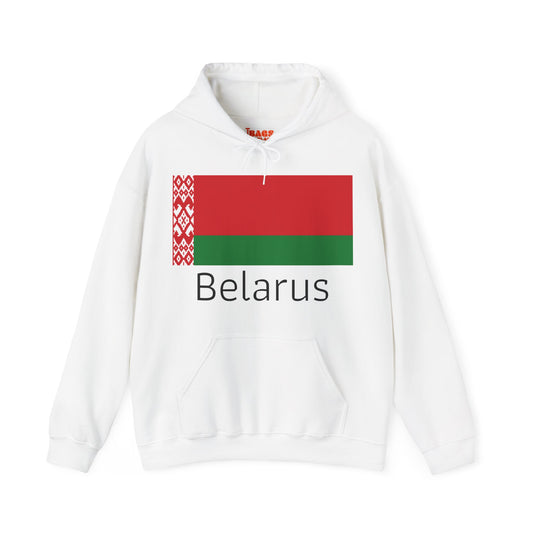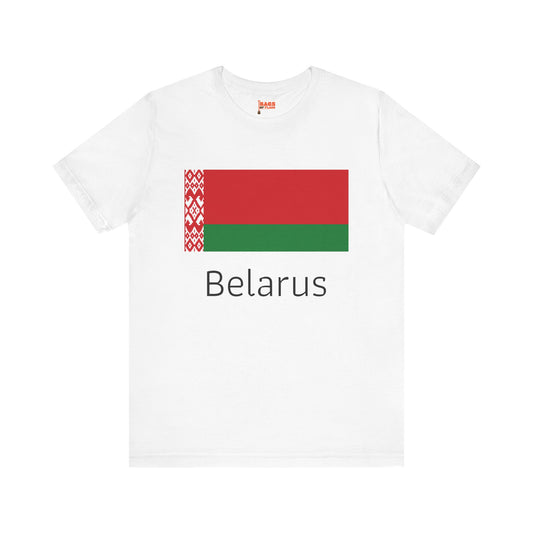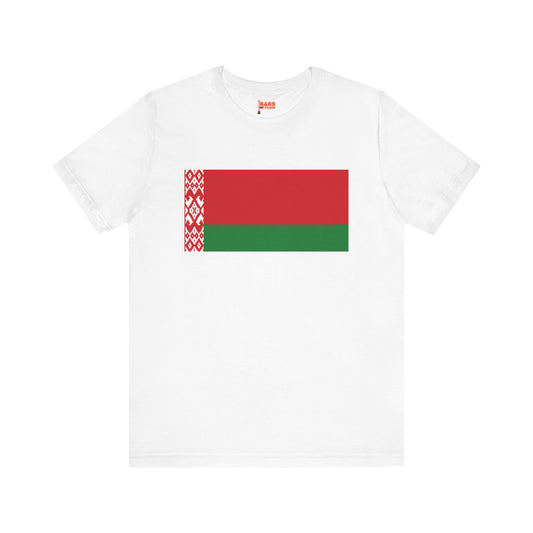-
Belarus Mug
Regular price $11.65 USDRegular priceUnit price / per -
Belarus Leather Patch Hat
Regular price $18.85 USDRegular priceUnit price / per -
Belarus Pillow
Regular price $22.65 USDRegular priceUnit price / per -
Belarus Backpack
Regular price $59.79 USDRegular priceUnit price / per -
Belarus Sweatshirt
Regular price $34.15 USDRegular priceUnit price / per -
Belarus Flag Sweatshirt
Regular price $34.15 USDRegular priceUnit price / per -
Belarus Trucker Cap
Regular price $14.90 USDRegular priceUnit price / per -
Belarus Hoodies
Regular price $34.40 USDRegular priceUnit price / per -
Belarus T-shirts
Regular price $22.79 USDRegular priceUnit price / per -
Belarus Flag Hoodies
Regular price $34.40 USDRegular priceUnit price / per -
Belarus Flag on T-shirt
Regular price $22.79 USDRegular priceUnit price / per
Collection: Belarus
The Belarus flag, also known as the flag of Belarus, symbolizes national pride and identity for the people of this Eastern European country. With its unique design and colors, the flag has a rich history and symbolism that reflects the country's culture and heritage. We will delve into the hidden stories behind the Belarus flag, exploring intriguing facts and anecdotes that make this flag genuinely fascinating.
Overview of the Belarus Flag

The Belarusian flag features a distinctive design characterized by two horizontal stripes and a unique pattern. The upper stripe is red, and the lower is green, occupying two-thirds of the flag's area. To the left, adjacent to the flagpole, is a vertical white and red decorative pattern inspired by traditional Belarusian folk designs. This configuration was introduced in 1995, replacing the historic white-red-white flag reinstated briefly after the country declared independence in 1991. The red color of the upper stripe and the traditional pattern link to the country's heritage and cultural identity, while the green represents the nation's forests and natural wealth. This modern flag blends Belarus's traditions with its post-Soviet identity, reflecting historical influences and contemporary statehood.
Historical Context of the Belarus Flag

The Belarus flag has undergone several transformations that mirror the nation's tumultuous history. Initially, the white-red-white flag emerged as a national symbol during the short-lived Belarusian People's Republic in 1918, a time marked by the collapse of the Russian Empire and the ensuing chaos of World War I. This flag was re-adopted briefly after Belarus declared independence from the Soviet Union in 1991, symbolizing a return to national sovereignty and historical roots. However, this was short-lived.
In 1995, a significant year marked by a controversial referendum initiated by the president, the current red and green flag, embellished with a traditional Belarusian decorative pattern, was introduced. This shift aimed at distancing the national identity from the 1991 independence movement and aligning more closely with post-Soviet state ideologies. Adopting the new flag was met with mixed reactions, highlighting deep divisions within Belarusian society regarding national identity and historical continuity.
Throughout its history, the flag of Belarus has been more than a symbol of statehood; it has been a canvas on which the political and social movements of the time have been painted, reflecting the country's ongoing struggle with its identity and the differing visions for its future.
Symbolism Embedded in the Flag
The symbolism of the Belarus flag is rich and multifaceted, extending beyond its striking colors to include the traditional decorative pattern that graces the flag's hoist side. The red stripe embodies strength, resilience, and the blood of those who have fought for the country's sovereignty and independence. In contrast, the green stripe represents the fertility of the land, the vast Belarusian forests, and the hope for a prosperous future.
The inclusion of a traditional white and red pattern, inspired by local folk art, speaks to the nation's cultural heritage and history, emphasizing a connection to Belarus's past. This pattern, often found in Belarusian handicrafts, symbolizes the intricate weave of Belarusian society and the continuity of its people's traditions and values through turbulent times. These elements convey a message of pride, endurance, and an unwavering connection to the Belarusian homeland and its cultural roots, painting a picture of a nation that honors its past while forging ahead into the future.
Current Relevance of the Flag
The Belarus flag continues to be a central emblem of state sovereignty, prominently featured at governmental buildings, national festivities, and international diplomatic gatherings. It encapsulates the collective identity and pride of the Belarusian people, symbolizing their distinct culture and the endurance of their nation. Despite its official status and widespread use in state-related contexts, the flag remains a focal point of the country's political discourse and public sentiment. It has sparked debates over national identity and historical legacy, particularly among opposition groups and those who nostalgically recall the earlier white-red-white flag as a more authentic representation of Belarusian independence and democratic aspirations.
In recent years, the current flag has been both a symbol of the official state narrative and a subject of contention, illustrating the ongoing conversation about what it means to be Belarusian in the contemporary era. These discussions are not confined to the political arena but extend into the realm of social media, cultural events, and everyday conversations among citizens, reflecting a society still navigating its path between historical traditions and future possibilities. The flag’s presence in military ceremonies also underscores its role in defining national identity and sovereignty, serving as a reminder of the sacrifices made by past generations and the importance of unity in facing future challenges.
Additional Facts About the Belarus Flag
Formal guidelines must be followed when displaying the Belarus flag to ensure respect for this national symbol. Among these protocols, it is mandated that the flag should never be utilized for commercial promotion or be modified in a manner that could be construed as derogatory. This attention to protocol underscores the flag's sacred status within Belarusian culture and the importance of maintaining its dignity in public and private spheres.
A lesser-known fact about the flag involves its transformation during the Soviet period. The national flag was significantly altered to include the hammer and sickle emblem, signifying Belarus's integration into the Soviet Union. This change reflected the political landscape of the time, diverging sharply from the flag's original design and symbolism. The post-Soviet era, particularly adopting the current flag design in 1995, marked a return to national symbols that resonate more closely with Belarus's historical and cultural identity, albeit with new elements that align with the country's contemporary narrative.
Additionally, it's fascinating to note that the flag's design, precisely the traditional decorative pattern, is protected under Belarusian law. This protection ensures the pattern's exclusive association with the state, preventing unauthorized use and preserving its significance as an emblem of the Belarusian nation. This legal safeguard highlights the profound connection between the flag's design elements and its national identity.




